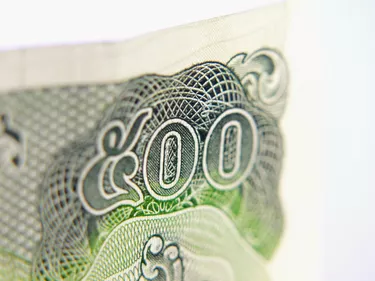
A currency devaluation is a serious matter for a nation. It can have many negative repercussions, but it can also make a country's products more competitive against products produced in other nations. For a consumer traveling to a nation where there was a recent devaluation, though, it's a good thing in terms of the financial aspects of travel. Relative to the pre-devaluation of the currency, prices will be cheaper for those exchanging money. When you purchase the devalued currency, you will get more of it per every dollar you exchange. If you are planning travel, or just curious what the percentage change of the devaluation is relative to its prior rate, the percentage calculation is elementary.
Step 1
Subtract the pre-devaluation exchange rate (against the dollar or your currency of choice) from the devalued exchange rate. For instance, if the pre-devaluation rate is 24 dinars (or other currency), and the post devaluation rate is 37 dinars, the difference is 13 dinars on the dollar.
Video of the Day
Step 2
Divide the result by the pre-devaluation figure to get the percentage of the devaluation. Here, 13 divided by 24 is 0.54, indicating a 54 percent devaluation.
Step 3
Figure the change in purchasing power of a given number of dollars. Divide the number of dollars that you would exchange by 54 percent to see what the value of the same number of dollars would be post-devaluation. For example, an exchange of $250 prior to the devaluation would have the purchasing power of about $463 (250 divided by 0.54) after the devaluation. The prices in the country of the devaluation are static, but what you could purchase increased dramatically in this case.
Video of the Day